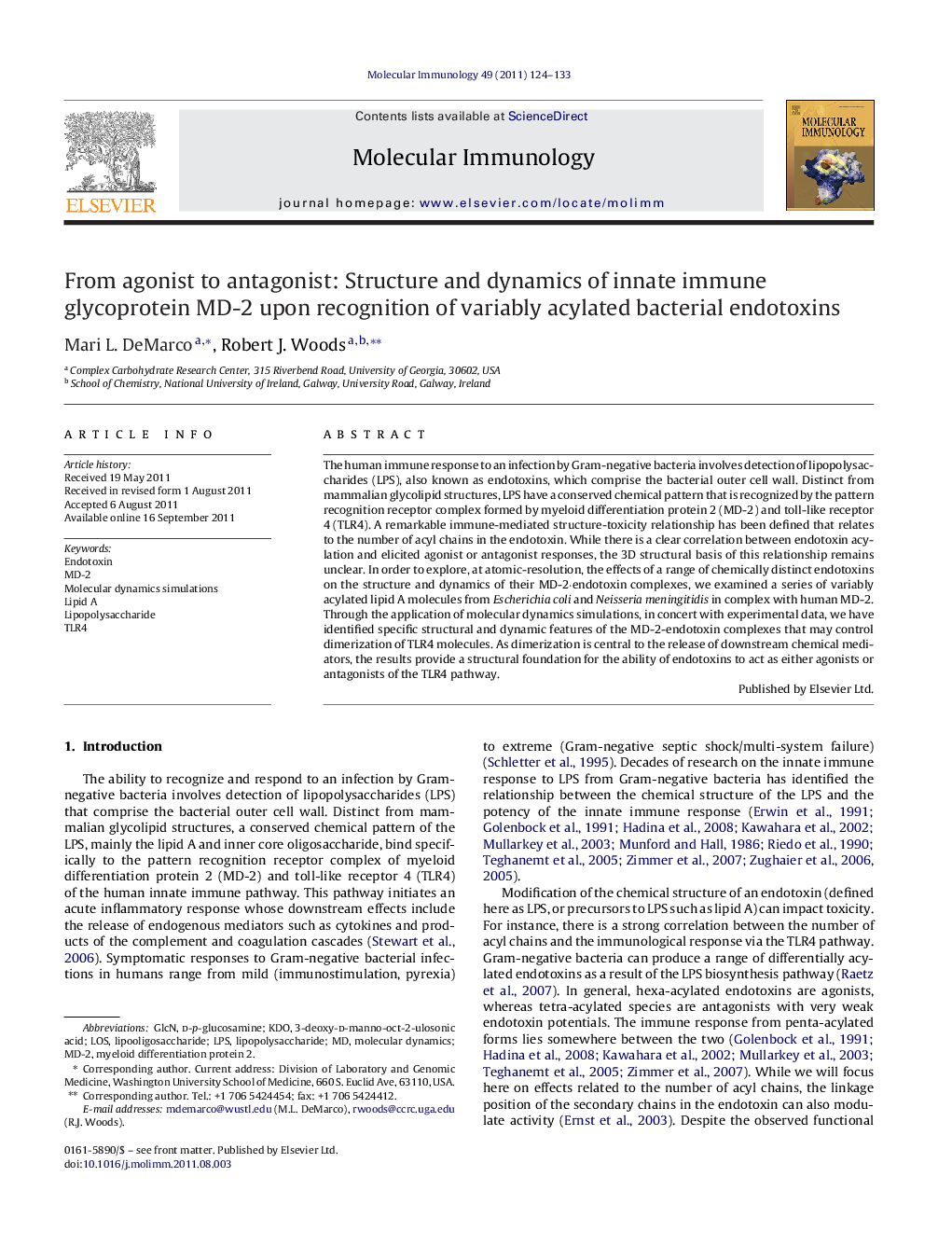| Article ID | Journal | Published Year | Pages | File Type |
|---|---|---|---|---|
| 5917451 | Molecular Immunology | 2011 | 10 Pages |
The human immune response to an infection by Gram-negative bacteria involves detection of lipopolysaccharides (LPS), also known as endotoxins, which comprise the bacterial outer cell wall. Distinct from mammalian glycolipid structures, LPS have a conserved chemical pattern that is recognized by the pattern recognition receptor complex formed by myeloid differentiation protein 2 (MD-2) and toll-like receptor 4 (TLR4). A remarkable immune-mediated structure-toxicity relationship has been defined that relates to the number of acyl chains in the endotoxin. While there is a clear correlation between endotoxin acylation and elicited agonist or antagonist responses, the 3D structural basis of this relationship remains unclear. In order to explore, at atomic-resolution, the effects of a range of chemically distinct endotoxins on the structure and dynamics of their MD-2·endotoxin complexes, we examined a series of variably acylated lipid A molecules from Escherichia coli and Neisseria meningitidis in complex with human MD-2. Through the application of molecular dynamics simulations, in concert with experimental data, we have identified specific structural and dynamic features of the MD-2-endotoxin complexes that may control dimerization of TLR4 molecules. As dimerization is central to the release of downstream chemical mediators, the results provide a structural foundation for the ability of endotoxins to act as either agonists or antagonists of the TLR4 pathway.
Graphical abstractDownload full-size imageHighlights⺠MD-2 complexes with variably acylated endotoxins share similar 2° and 3° structure. ⺠These complexes have markedly different quaternary structure. ⺠Placement of endotoxin in binding cavity is regulated by volume of the lipid domain. ⺠Both dynamic and structural properties of the complex are functionally important. ⺠TLR4 activation correlates with exposed apolar surface in MD-2·endotoxin complexes.
